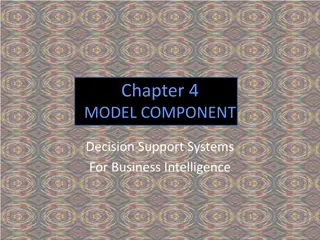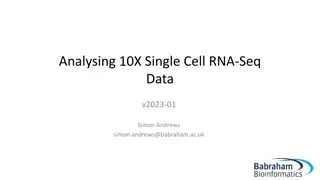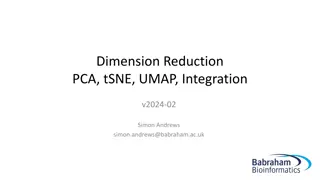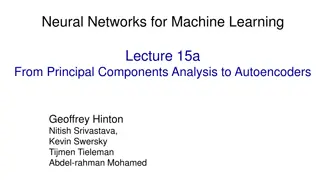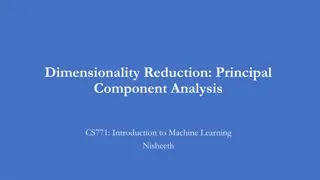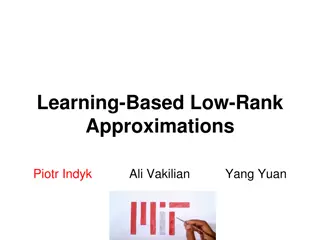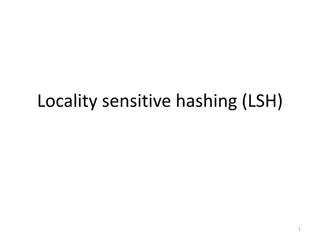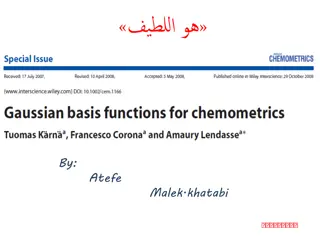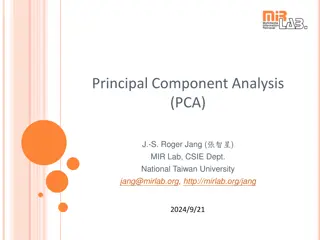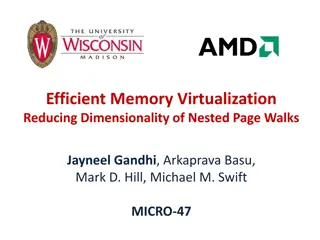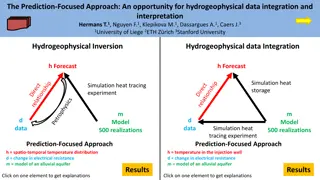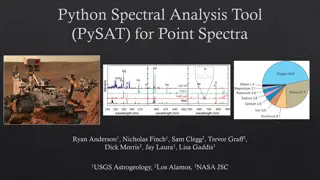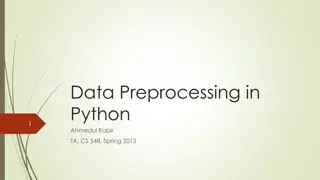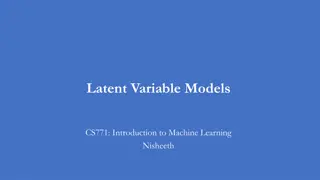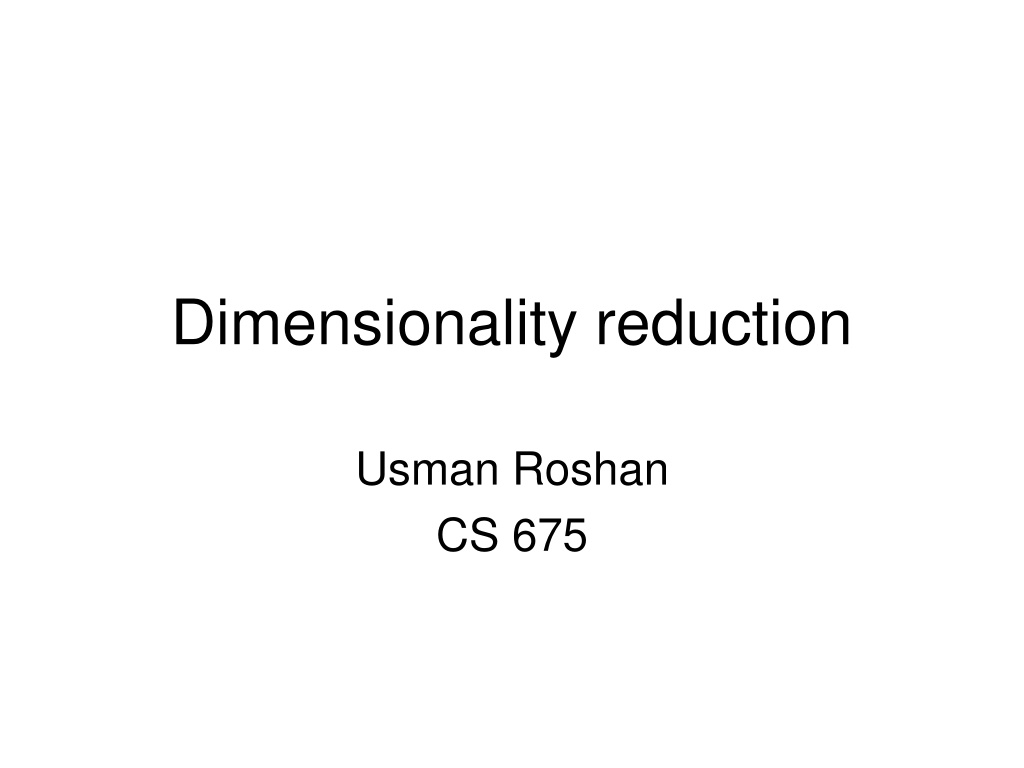
Linear Discriminant Analysis for Dimensionality Reduction
Explore the concept of Linear Discriminant Analysis (LDA) as a supervised dimensionality reduction technique. Learn how LDA maximizes the ratio of difference means to the sum of variance, utilizing scatter matrices and Fisher linear discriminant solutions for improved data separation.
Download Presentation

Please find below an Image/Link to download the presentation.
The content on the website is provided AS IS for your information and personal use only. It may not be sold, licensed, or shared on other websites without obtaining consent from the author. If you encounter any issues during the download, it is possible that the publisher has removed the file from their server.
You are allowed to download the files provided on this website for personal or commercial use, subject to the condition that they are used lawfully. All files are the property of their respective owners.
The content on the website is provided AS IS for your information and personal use only. It may not be sold, licensed, or shared on other websites without obtaining consent from the author.
E N D
Presentation Transcript
Dimensionality reduction Usman Roshan CS 675
Supervised dim reduction: Linear discriminant analysis Fisher linear discriminant: Maximize ratio of difference means to sum of variance
Linear discriminant analysis Fisher linear discriminant: Difference in means of projected data gives us the between-class scatter matrix Variance gives us within-class scatter matrix
Linear discriminant analysis Fisher linear discriminant solution: Take derivative w.r.t. w and set to 0 This gives us w = cSw-1(m1-m2)
Scatter matrices Sbis between class scatter matrix Swis within-class scatter matrix St= Sb+ Swis total scatter matrix
Fisher linear discriminant General solution is given by eigenvectors of Sw-1Sb
Fisher linear discriminant Problems can happen with calculating the inverse A different approach is the maximum margin criterion
Maximum margin criterion (MMC) Define the separation between two classes as 2- s(C1)- s(C2) m1- m2 S(C) represents the variance of the class. In MMC we use the trace of the scatter matrix to represent the variance. The scatter matrix is 1 n i=1 n (xi- m)(xi- m)T
Maximum margin criterion (MMC) The scatter matrix is 1 n i=1 n (xi- m)(xi- m)T The trace (sum of diagonals) is 1 n d n (xij- mj)2 j=1 i=1 Consider an example with two vectors x and y
Maximum margin criterion (MMC) Plug in trace for S(C) and we get m1- m2 2-tr(S1)-tr(S2) The above can be rewritten as tr(Sb)-tr(Sw) Where Swis the within-class scatter matrix Sw= xi Ck k=1 c (xi- mk )(xi- mk)T And Sbis the between-class scatter matrix Sb= (mk- m)(mk- m)T k=1 c
Weighted maximum margin criterion (WMMC) Adding a weight parameter gives us tr(Sb)-atr(Sw) In WMMC dimensionality reduction we want to find w that maximizes the above quantity in the projected space. The solution w is given by the largest eigenvector of the above Sb-aSw
How to use WMMC for classification? Reduce dimensionality to fewer features Run any classification algorithm like nearest means or nearest neighbor. Experimental results to follow.
K-nearest neighbor Classify a given datapoint to be the majority label of the k closest points The parameter k is cross-validated Simple yet can obtain high classification accuracy
Weighted maximum variance (WMV) Find w that maximizes the weighted variance
PCA via WMV Reduces to PCA if Cij= 1/n
MMC via WMV Let yibe class labels and let nk be the size of class k. Let Gijbe 1/n for all i and j and Lijbe 1/nkif i and j are in same class. Then MMC is given by
Graph Laplacians We can rewrite WMV with Laplacian matrices. Recall WMV is Let L = D C where Dii= jCij Then WMV is given by where X = [x1, x2, , xn] contains each xias a column. w is given by largest eigenvector of XLXT
Graph Laplacians Widely used in spectral clustering (see tutorial on course website) Weights Cijmay be obtained via Epsilon neighborhood graph K-nearest neighbor graph Fully connected graph Allows semi-supervised analysis (where test data is available but not labels)
Graph Laplacians We can perform clustering with the Laplacian Basic algorithm for k clusters: Compute first k eigenvectors viof Laplacian matrix Let V = [v1, v2, , vk] Cluster rows of V (using k-means) Why does this work?
Graph Laplacians We can cluster data using the mincut problem Balanced version is NP-hard We can rewrite balanced mincut problem with graph Laplacians. Still NP- hard because solution is allowed only discrete values By relaxing to allow real values we obtain spectral clustering.
Back to WMV a two parameter approach Recall that WMV is given by Collapse Cijinto two parameters Cij= < 0 if i and j are in same class Cij= > 0 if i and j are in different classes We call this 2-parameter WMV
Experimental results To evaluate dimensionality reduction for classification we first extract features and then apply 1-nearest neighbor in cross-validation 20 datasets from UCI machine learning archive Compare 2PWMV+1NN, WMMC+1NN, PCA+1NN, 1NN Parameters for 2PWMV+1NN and WMMC+1NN obtained by cross- validation
Results Average error: 2PWMV+1NN: 9.5% (winner in 9 out of 20) WMMC+1NN: 10% (winner in 7 out of 20) PCA+1NN: 13.6% 1NN: 13.8% Parametric dimensionality reduction does help
Results Average error on high dimensional data: 2PWMV+1NN: 15.2% PCA+1NN: 17.8% 1NN: 22%


